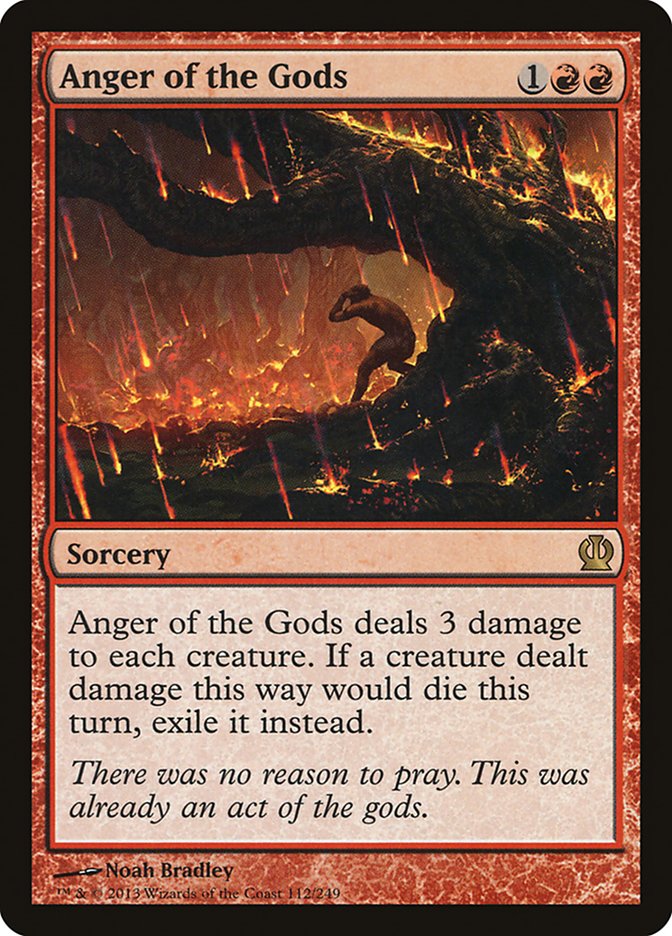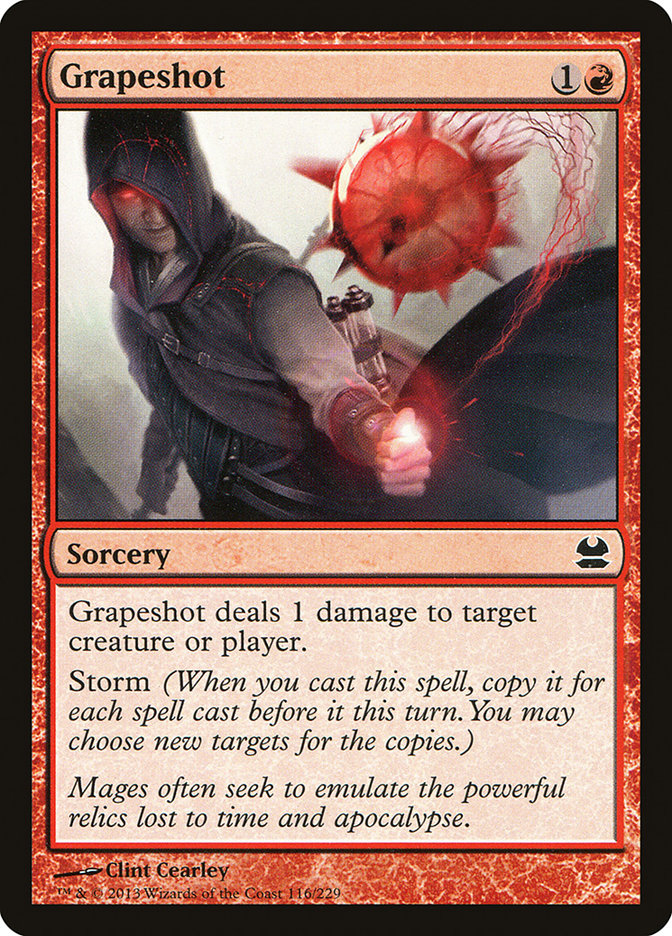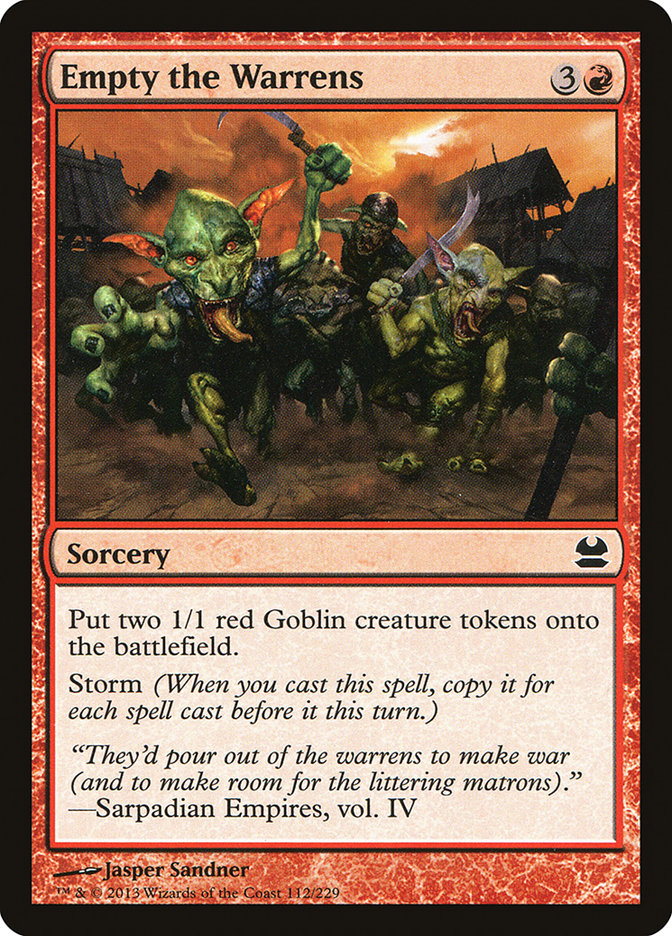Wow, what a weekend!
I knew that Pro Tour Born of the Gods would be interesting, but the representation of so many different styles of decks really made things exciting. My predictions going into the Pro Tour involved a lot of diversity, and the weekend certainly didn’t disappoint. Almost everything you’d expect at the top tables was there—and then some. I had to rewrite and add to this article as the Pro Tour went on due to how many exciting moments, breakout cards, and interesting decks popped up! It was a very important weekend for the Modern format, and every detail moving forward is covered here.
Day 1 Decks & Metagame Breakdown
Zoo was the most played deck in the field by a fair margin, and it doesn’t really surprise me. Wild Nacatl is that strong and was a very obvious but super powerful direction many players went with. Aggressive creatures have been getting great treatment in the past year with Ghor-Clan Rampager; Loxodon Smiter; and even Brimaz, King of Oreskos, and all of those were represented in some form on Friday.
Splinter Twin was the second most represented deck on the first day, and again nothing unexpected here. Many players consider Twin the best deck in the format, and it could very well still be true. Part of the reason why Twin has been doing so well is because of how versatile it is. It’s very easy for people playing against Twin to overcompensate for the combo kill part of the deck and just die to the "cast Vendilion Clique, tempo you out" part. The deck is quite possibly one of the best tempo decks out there as well as one of the best combo decks, and adapting to that has proven to be quite the task.
One of the more unexpected decks to show up significantly was G/W Auras. It made up six percent of the field with 24 copies. This was my wild card deck of choice going into the PT, as I felt the number of people playing the deck was heavily dependent on how they felt the amount of cheap sweepers (Anger of the Gods, Pyroclasm, Engineered Explosives), sacrifice effects, and hyperaggressive decks would be there.
Finally, we have the talk of the first day. StarCityGames.com’s very own hat-wearing master Matthias Hunt piloted a pretty sweet take on Amulet Combo, a deck that was brought to light by Gerry Thompson (miss you buddy!) and was also ridiculed for a long time before this past weekend.
Creatures (11)
Lands (28)
Spells (21)

Many players questioned what previous iterations of the deck were actually trying to do. I mean, you’re bouncing all of these lands and making all of this mana just to resolve a Primeval Titan and attack for eight? It turns out that these seemingly convoluted sequences result in some absurdly overwhelming boards. Matthias’ take gives the deck a newfound path of consistency and explosiveness while also weaving in Hive Mind, an incredibly solid plan B that doesn’t interfere with the deck’s plan A and is certainly something that many players weren’t ready for. This deck is very well constructed, and as someone that loves tinkering with numbers in decks, I wouldn’t change a single thing since there are some extremely delicate pieces to this puzzle.
Day 2 Decks & Metagame Breakdown
Living End was the big statistical winner among the decks to make it to the second day, with Michael Hetrick leading the pack. Twelve out of fourteen Living End players made day 2, and with creature decks being everywhere on day 1, the deck had a lot to prey on.
Creatures (29)
- 2 Simian Spirit Guide
- 4 Street Wraith
- 2 Shriekmaw
- 4 Fulminator Mage
- 1 Jungle Weaver
- 4 Architects of Will
- 4 Pale Recluse
- 4 Monstrous Carabid
- 4 Deadshot Minotaur
Lands (19)
Spells (12)
Sideboard

While you’re essentially a combo deck, you also have inherent access to a three-mana instant sweeper effect in Violent Outburst. This makes things very difficult for hyperaggressive decks. Do you extend as hard as you can to kill them as fast as possible? A Living End off of a Violent Outburst puts a huge dent in that plan and can often cost you the game. Do you pace yourself and only put a few threats on board at a time to try to avoid the blowout? This plan gets blown up by any reasonable number of creatures, and Pale Recluse covers fliers as well.
Zoo, which was out in force on Friday, wound up doing much worse on Saturday despite still being the most played deck. While Living End was most likely a contributor, I think that the overwhelming presence of inherent anti-aggro cards was the bigger factor. Melira Pod and G/W Auras were two of the most played decks on the second day, and both of them are very resilient to being attacked head on.
Living End wasn’t the only breakout deck on the second day.
Creatures (5)
Lands (22)
Spells (33)

Blood Moon and Spreading Seas have seen regular play for quite some time now—but never in this fashion. The shell around these two cards sort of resembles a Next Level Blue or U/x Control base. Vedalken Shackles makes an appearance here for the first time in a while, and this is easily one of the best shells for it. While I don’t think this deck is a great choice for Grand Prix Richmond going forward, it made for an excellent choice for the Pro Tour because of the surprise factor and how unprepared players were for it.
Next up is my buddy Jared Boettcher, who placed ninth with Ad Nauseam:
Creatures (4)
Lands (20)
Spells (36)

While it doesn’t look like it’d make that big of an improvement, adding Temple of Deceit and Temple of Enlightenment is fantastic for this type of deck. There are two primary pieces and two major catalysts to this deck, and having the ability to see as many cards as possible without investing actual spell slots is a brilliant deckbuilding move. The addition of Conjurer’s Bauble is also excellent since it allows you to rebuy your kill condition, Lightning Storm, after it has been discarded. This is a representation of just how important it is to have great deckbuilders and tuners.
Finally, there’s 8 Rack:
Creatures (4)
Planeswalkers (4)
Lands (23)
Spells (29)
- 3 Ensnaring Bridge
- 4 The Rack
- 4 Wrench Mind
- 2 Smallpox
- 4 Thoughtseize
- 4 Raven's Crime
- 4 Inquisition of Kozilek
- 4 Shrieking Affliction
Sideboard

When a format has a large amount of decks that rely on specific pieces to function, ripping those pieces apart quickly is a great strategy. Couple that with moderate residual damage over the course of a game and you have yourself a great plan. 8 Rack can give decks like Twin, Pod, and Scapeshift huge nightmares. Liliana of the Veil is as strong as she’s ever been, and I’d argue that she’s at her best here. Wrench Mind is a solid Hymn to Tourach proxy, and Mutavault is one of the best win conditions available. Two damage isn’t very much, but it adds up quickly when your opponent is also taking damage from The Rack with no cards in hand and very little resources to work with.
The Top 8
Splinter Twin and Birthing Pod once again made a strong showing, with three copies of varied Twin decks and a Melira Pod deck representing. This further cements their stance as the best decks in the format by a solid margin, and I don’t see that slowing down any time soon.
The different flavors of Twin are very interesting, as they’re largely representative of how Twin decks have evolved over the course of the year. In the past the deck tried to get the combo out as reliably as possible, with some builds going all in on Splinter Twin and Kiki-Jiki, Mirror Breaker with four copies of each. Nowadays Twin has shifted very heavily toward a tempo role, often eschewing Kiki-Jiki entirely and adding cards like Grim Lavamancer, Vendilion Clique, Snapcaster Mage, Restoration Angel, and as of this past weekend Tarmogoyf, as shown by true Twin master Patrick Dickmann.
Creatures (16)
Lands (21)
Spells (23)

We all know how good Tarmogoyf is, but when you add it to this shell, the pressure of a combo kill is greatly alleviated from you and heavily pressed on your opponent. Pestermite and Deceiver Exarch are both great at attacking and defending against aggressive decks, so it makes sense to play six of them despite only having four Splinter Twins. I’m really looking forward to seeing where Patrick takes this archetype. In my view, he is the pioneer of the deck, and he continues to innovate at each tournament.
Breakout Cards
Anger of the Gods is easily my first pick for the most standout card in the tournament. As I said before, three toughness is the new two toughness, and Anger of the Gods lines up with the rest of the format to the point where it’s a hard sweeper. Anger of the Gods will define Modern through Richmond and for the foreseeable future.
Blood Moon has always been a thing in Modern, seeing some play in assorted Splinter Twin, Mono-Red Aggro, and even some Zoo decks, but never to the extent that it was this past weekend. An entire deck was born, and it really did a number on many mana bases, propelling Lee Shi Tian to a Top 8 finish.
Storm is back?! No, no. Storm never left.
Storm is yet another deck able to thrive off of the absence of Deathrite Shaman, and Chris Fennell, Kai Budde, and Jon Finkel all had ridiculous records in the Constructed portion of the Pro Tour with Storm. While I don’t see Storm making any sort of major resurgence, I certainly don’t think it’s going to go away either.
Looking Back
A couple weeks ago I made a short list of what I expected after the bannings going into the Pro Tour. Let’s see how I did.
What Gets Better
- Green-based aggressive decks. This was spot on, and the sheer numbers made this true. Zoo was everywhere, and it doesn’t have any signs of slowing down.
- Token-based decks. This didn’t really come to fruition. My guess is that the token decks just weren’t very good against what was going on at the Pro Tour
- Birthing Pod decks, specifically Melira Pod. Jacob Wilson is a stone-cold master. Enough said.
- Voice of Resurgence / Thundermaw Hellkite. Though there was a slight uptick in the presence of Voice of Resurgence, I think that we can safely count this as inconclusive. We aren’t entirely sure just how impactful Voice was throughout the weekend, and I think that this claim needs more time to develop.
- Uncounterable spells like Abrupt Decay; Counterflux; Thrun, the Last Troll; Cavern of Souls; Supreme Verdict; and Aether Vial. There was certainly an increase in some of these, and I think that will continue through Richmond.
- Graveyard-based creatures like Kitchen Finks and Murderous Redcap. There was a moderate uptick in Snapcaster Mage as well, but it was not as much as I expected. Scavenging Ooze was a real presence.
- Trample. Not much in this department. We wound up seeing much less trample because many of the decks that would play it didn’t really need it. Note that many of the Zoo decks playing Geist of Saint Traft also played Ghor-Clan Rampager.
What Stays The Same
- B/G/x Midrange. Willy Edel was my only hope going into this claim, and while he certainly delivered, the numbers just weren’t there. Edel’s list is a great start though, and it’s one of my leading candidates of decks that could do well in Richmond. (Side Note: I was very high on Courser of Kruphix because of how well it matches up against so many aggressive and midrange decks. I expect the B/G-based midrange decks to go forward with this route.)
- Faeries: The deck just wasn’t good this weekend. Bitterblossom in a format where people are killing you on the spot is not where you want to be. That said, this is a miss for me because I felt that the already existing Fae decks would stay the same. They wound up being much worse than I thought.
- Graveyard-based strategies (differs from graveyard-based creatures). Besides Living End, graveyard-based strategies like Goryo’s Vengeance weren’t very represented, but I think that will change moving forward. Living End was huge here, but I don’t expect that to continue going forward. Michael Hetrick echoes my thoughts pretty clearly:
In Day Two I played four bad matchups. Living End was definitely a better Day One deck. #ptbng
— Michael Hetrick (@theshipitholla) February 22, 2014
It's also fairly all or nothing which is why I probably won't continue playing it seriously. Pod seems like the best deck, easily. #PTBNG
— Michael Hetrick (@theshipitholla) February 22, 2014
- Non Wild Nacatl aggro decks, specifically Affinity and Merfolk. Affinity wound up being the same powerhouse it always is, but Merfolk didn’t do as well. It did have a nice day 2 turnover rate, but it wasn’t the greatest showing on that day.
What Gets Worse
- Tron. One word: geez. Tron was a huge bust in Spain, having the lowest win percentage among all sub-archetypes. (2.4 wins among five players on the second day). The deck does not look good at all against what’s going on now, and while the Karnfather is still super powerful, I think the deck needs a huge facelift fast.
- Geist of Saint Traft. Not enough evidence to really say mostly because of how much else was going on around the U/W color combination. The future is currently unclear, but if it has a chance, it’ll be alongside Ghor-Clan Rampager and/or Snapcaster Mage.
- Electrolyze. A bit more effective than initially thought, which is a very good thing. The amount of one- and two-toughness creatures was much higher than expected, so this remains a great tool going forward.
- Mistbind Clique. Basically nonexistent. Not much more can be said about it. When some of the Fae decks aren’t even playing it, you know that there’s a problem
- Fetch land into shock land. The format was actually quite friendly to this sequence, but more players were being a bit protective of their life total by putting shock lands on the battlefield tapped. This will remain a question during Richmond, as the amount of aggressive decks will determine how much one can get away with it.
What Happens Now?
Despite such a wild weekend, the formula stays the same in my view. If you’ve been playing a solid deck this whole time, stick with it and work to make it better. In the grand scheme of things, the format really didn’t change much at all. Almost every major thing I’ve covered in the entire Modern Misfits series was represented at the Pro Tour, along with some really nice surprises that are more than welcome. The margin between the best decks and all the other decks is so small, and the players that put more work into preparation and developing the skills to get through a Grand Prix will prosper. Skill matters much more than deck choice in Modern (and in any format really.)
I’m not going to lie—I’m getting more excited about Grand Prix Richmond with each passing day. How does the Pro Tour affect your deck or card choices?




